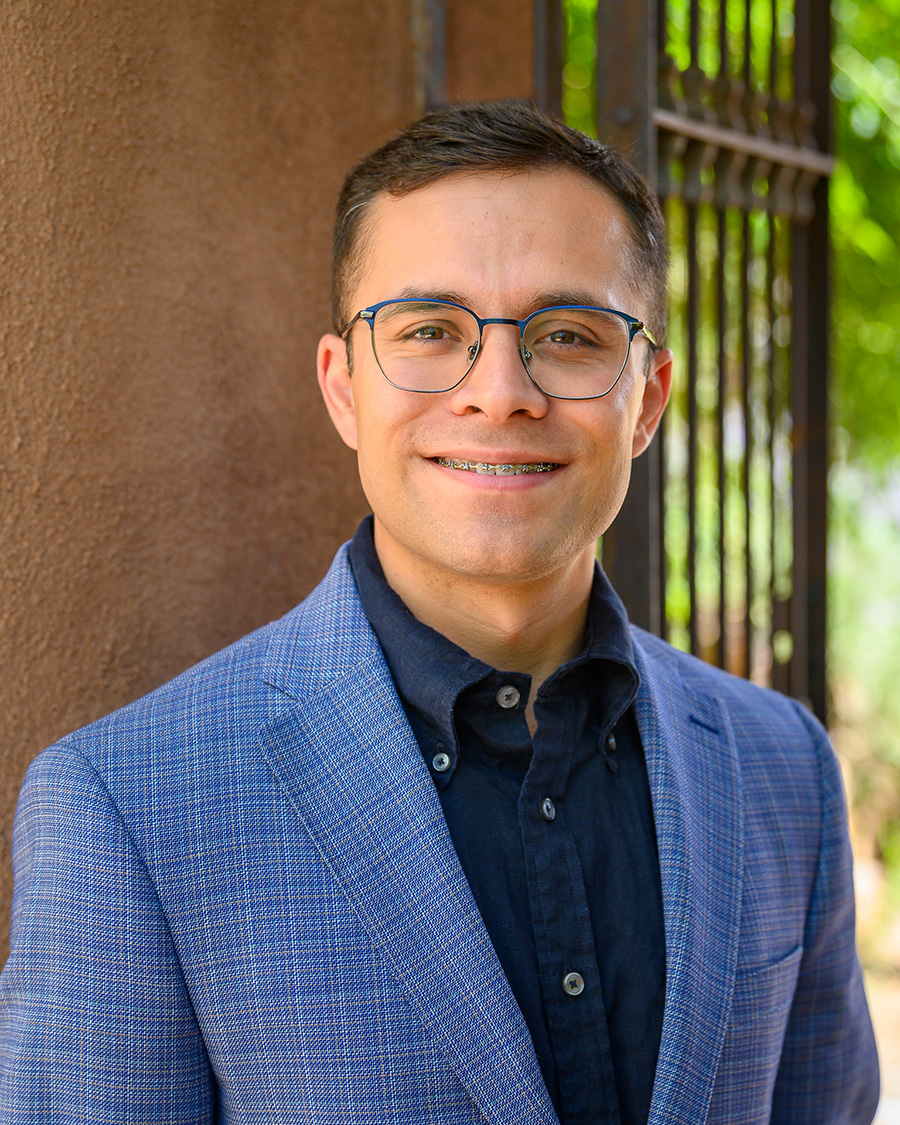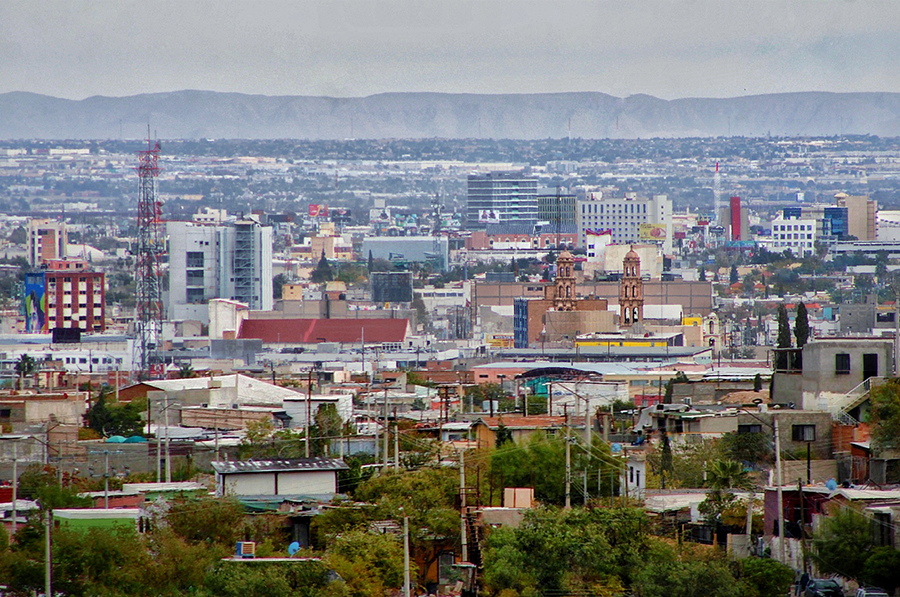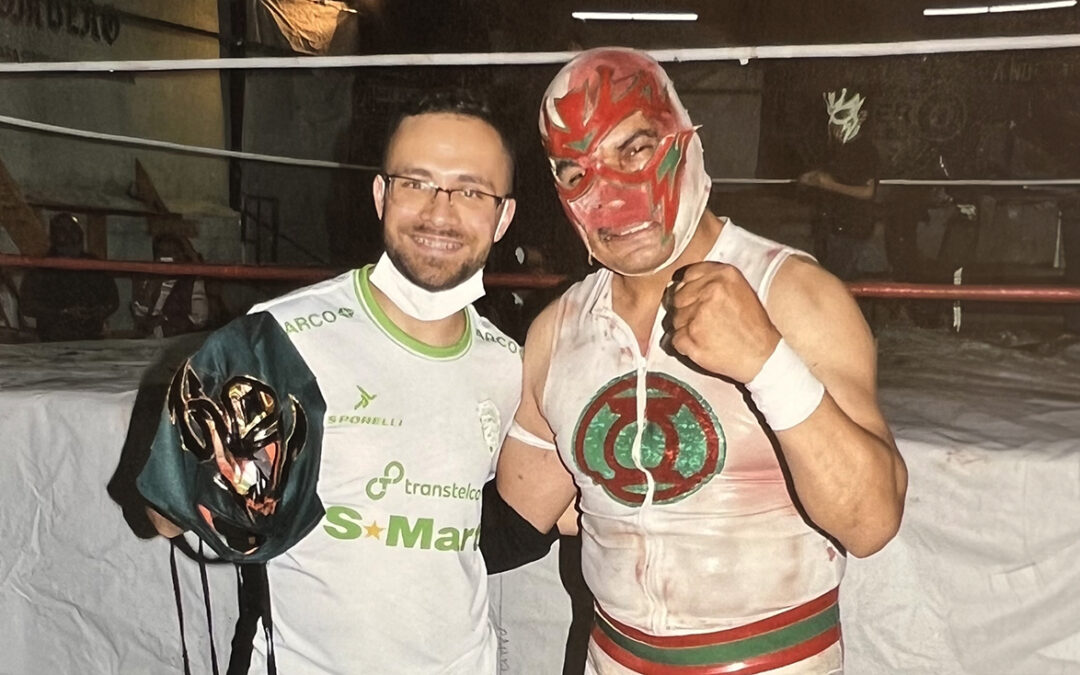Professor Alberto Wilson at Arenas El Bombero with the Green Hornet Jr. (Avispón Verde Jr.) before he retired. Photo courtesy of Alberto Wilson III.
When a man rides a long time through wild regions, he feels the desire for a city.
Each city receives its form from the desert it opposes . . .
The city, however, does not tell its past, but contains it like the lines of a hand . . .
—from Invisible Cities, Italo Calvino
Smack in the middle of the Chihuahuan Desert an urban landscape emerges. The Rio Grande, or Río Bravo to those in Mexico, trickles through, designating their two countries: to the north El Paso, Texas, and to the south, Ciudad Juárez, Chihuahua. They have separate names; however, it is impossible to consider one without the other. One of the largest binational urban centers in the Western hemisphere with roughly 2.5 million people, nearly two-thirds of which live in Juárez, the conjoined city straddles the border without any particular time or space between the two. Not on a coast and without a navigable waterway, how did Ciudad Juárez/El Paso become the international export city that it is today? What did it take for the working class to establish homes and communities? How does the sport Lucha Libre (freestyle wrestling) reflect the fighting spirit of the people?

Alberto Wilson
Dr. Alberto Wilson, incoming Assistant Professor of History at Texas Christian University and 2023-2024 Mellon Fellow at the School for Advanced Research (SAR), seeks to answer those questions and more in his upcoming book with the working title: Pan American City: Neoliberalism at the U.S.-Mexico Border and Ciudad Juárez’s Working Poor.
“What I’m interested in is understanding how businessmen and industrial outfits arrived on the U.S.-Mexico border while never losing sight of the people who worked in those places,” said Wilson about the focus of his book.
Wilson, who received the Fulbright García Robles scholarship to study in Mexico in 2019, seeks to emphasize the Mexican perspective of the border city that he calls home. “It’s the story of the U.S.-Mexico border with Mexico as an actor in the story.”
Wilson grew up in Ciudad Juárez until his family emigrated to Denver, Colorado. Wilson’s father worked the oil patch in Texas for much of his youth and his mother studied to become a Spanish teacher. When Wilson traveled east for History and Latin American Studies at Vassar College in New York State, he was the first in his family to move directly on to college.
Not just the vivid green and heavy humidity, but also the seclusion was different for Wilson at Vassar. “I was very used to living in cities, and to suddenly have your life-scale brought down to one square mile was very jarring. There’s an opportunity to just reflect.”
Wilson’s recent resident fellowship at SAR reminded him of those early days at Vassar. Wilson expressed thanks to SAR for the chance “to divest myself of the added burdens of city life . . . and to see myself as a scholar student once again. To be able to read, to think, to write, and to do so in such a beautiful setting.”
Wilson received his PhD in History from the University of Houston where his dissertation focused on a binational metropolitan history of El Paso/Ciudad Juárez. While at SAR, he continued to expand this work by developing chapters for his manuscript.
“Where I actually begin the story is not a very common place to do so,” said Wilson, explaining that he starts in the 1950s because that’s when Ciudad Juárez became an urban center.

The urban history of the binational city began when the railroad coursed through El Paso in the 1880s. El Paso became an industrial city while Ciudad Juárez was its agricultural outskirts. Today, Ciudad Juárez is the industrial behemoth.
It was prohibition in the 1920s and 1930s that developed Ciudad Juárez into a city. People from the U.S. crossed the border for fun and frolic in a place without potation restrictions. By the 1950s and 1960s, both sides had become one large Pan American city without much of a national boundary.
In 1942, the U.S. and Mexico signed a commerce agreement, later called the Bracero Program, enabling Mexican agricultural workers to come into the U.S. for seasonal work. Four-million two-hundred thousand contracts were awarded between 1942 and 1964.
In the 1950s, in urban Ciudad Juárez, roughly 270,000 people were looking for work and the need for housing led to activism.
“And you’re going to see this throughout,” continued Wilson. “It’s the women who are fundamental to that activism, either in the communities or on the shop floor.”
Eva Alicia Lopez became a leader of the squatter movement in the early 1960s. She had the audacity and confidence to communicate with the president of Mexico directly and clearly articulate just how difficult it was to live in the city. Eva Alicia Lopez organized unhoused residents into “a social movement that allowed the urban poor to purchase urban lots at highly reduced prices and then begin to build homes there. It’s these folks who will later become part of the maquiladora workforce. If we can understand this backdrop of activism that has to do with housing and how you find a suitable place to raise a family, we can understand the activism these women and men will engage in after the maquiladoras arrive,” Wilson added.
The maquiladoras were U.S.-run factories build in Mexico where half-assembled products were brought in, completed, and returned to the U.S. They started when the Bracero Program abruptly ended in 1964, leaving in its wake a large population accustomed to going to the U.S. for seasonal work and returning to Mexico with above-average purchasing power. Taking the opportunity of the available migrant workforce while seeking to expand it by enticing additional male and female laborers living in northern Mexico, the Mexican government decided to allow North American industrial firms to settle on the U.S.-Mexico border. The resulting industrial assembly plants were known as “maquiladoras.”
Ciudad Juárez became a center for export. There were numerous maquiladoras that primarily employed nimble-fingered women to finesse the assembly of parts to be exported to the U.S.
Because powerful people leave powerful traces, the stories of the many women working in the maquiladoras were dimmed by the perspectives of the industrialists and business folks who were primarily on the east side where the maquiladoras were built.
Wilson decided to turn his attention to the vibrant communities of the western side where the maquiladora working class actually lived.
“There’s a deep attachment to place among the working class communities in Juárez,” said Wilson. “The maquiladora is only half of their lives. Their communities are extremely vibrant places with much history.”
One of the ways the communities come together and demonstrate their fighting spirit is through the sport Lucha Libre, which means “freestyle wrestling.”
Wilson grew up watching Lucha Libre. When his family moved to Denver, they continued to make extended weekend trips to Ciudad Juárez, so Wilson never lost sight of his home and of the wrestling arena.
“I’m not too fond of getting smacked in the face,” mused Wilson, “but it seems in working class cultures, that’s the thing to do.”
It wasn’t until he was much older that Wilson learned that the wrestlers he grew up watching in the main arena in downtown Ciudad Juárez had progressed through a long trajectory of very small arenas in the colonias: the city’s working class communities.
Wilson went to Arena El Bombero where he met the Green Hornet Jr. (Avispón Verde Jr.), and watched him wrestle during his final years in competition. Avispón Verde Jr. retired without losing his mask, which meant that he never lost a match and no one ever knew his true identity.
Where work and sport are concerned, women are prominent in both arenas. Wilson noted that there are many female wrestlers in addition to male wrestlers called “exotics” who dress and fight as women. Lucha Libre represents the complexities at the core of the working class culture.
“There is a larger story there that transcends the sport itself,” Wilson said. “Wrestling is part of a larger political movement within these working class communities. When the book comes out, you’ll be able to see how a sport becomes a political arm.”
Wilson noted the dichotomy between political economy and social history. “I want to explain border industrialization, that is the political economy. I also want to understand the people who work in these places, and that is the social history.”
“I think wrestling is a very good metaphor for their lives,” added Wilson. “You get knocked down, but you always find a way to get back up.”
